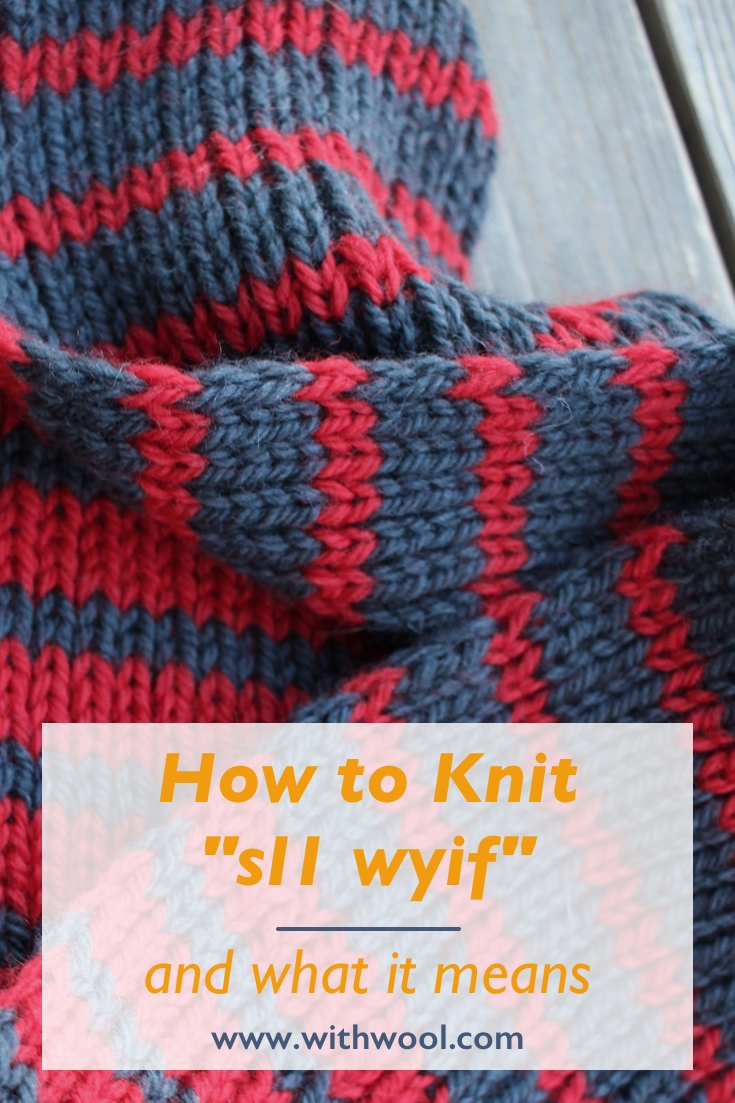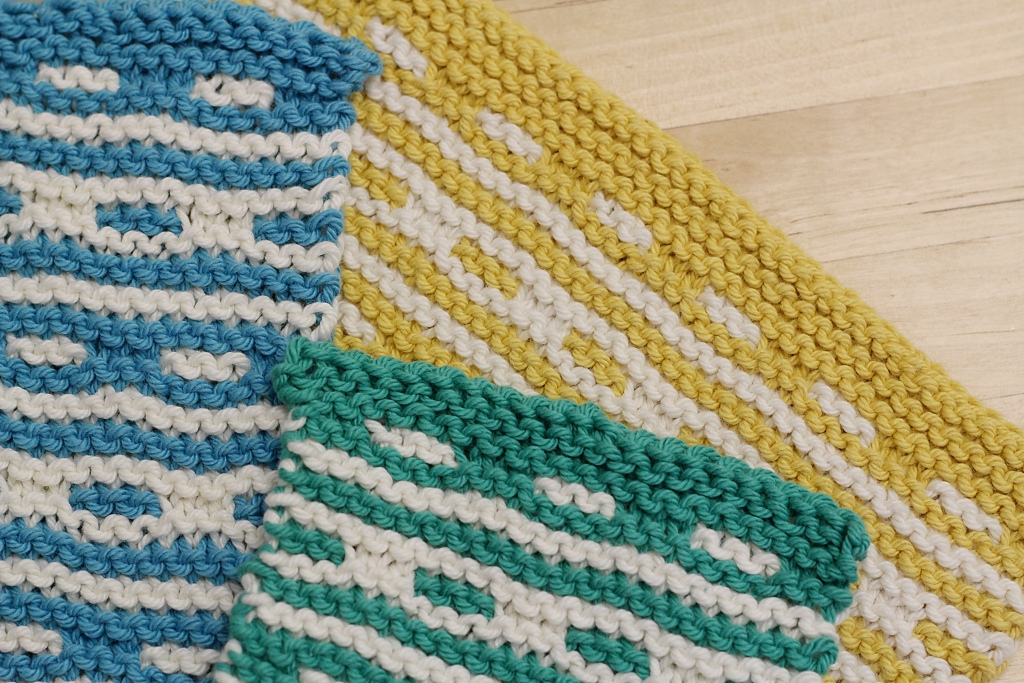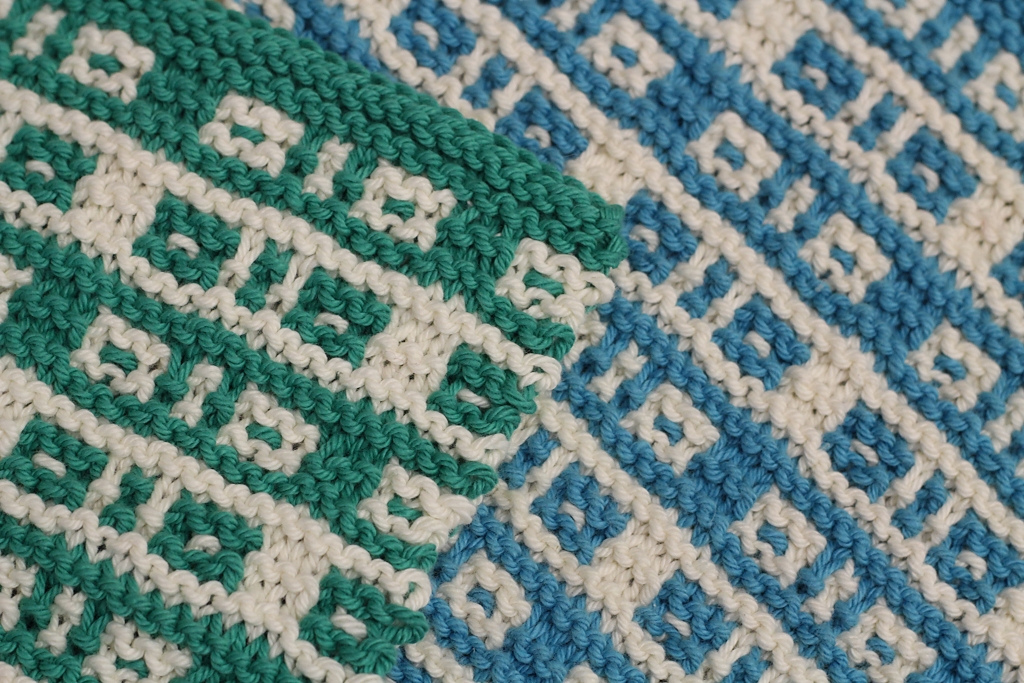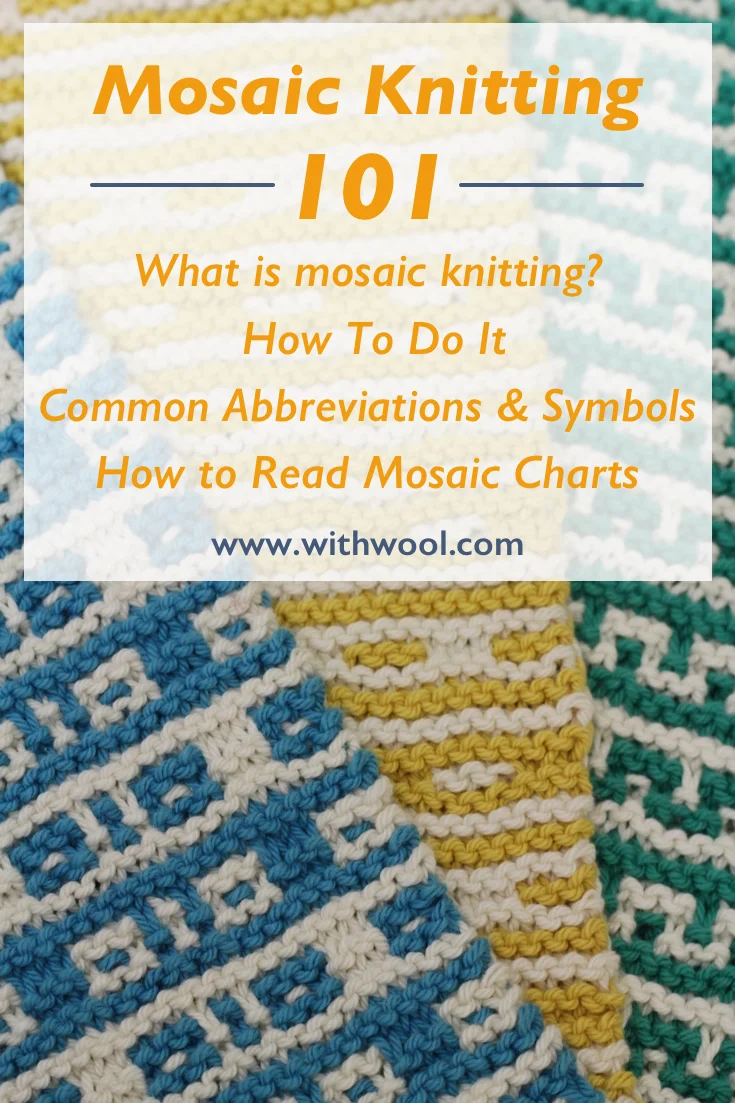How To Work "sl1 wyif"
/The Melded Scarf, get the pattern here, is a straight forward pattern to knit with 1x1 ribbing and stripes. So why is there a “sl1 wyif” worked at the end of each row and what does that mean? “sl1 wyif” is an abbreviation which means slip 1 stitch purl-wise with yarn in front. Because the "sl1 wyif" is worked at the end of the row, that slipped stitch creates a selvedge edge which gives the scarf a neat, finished edge. It also has the neat side effect of pushing and hiding the carried yarns from the stripes (video tutorial coming Thursday) away from the edge of the scarf.
The "sl1 wyif" along with it's opposite "sl1 wyib" - slip 1 stitch purl-wise with yarn in back - is also a big part of Mosaic Knitting, which you can learn more about here.
So how do you work a "sl1 wyif"?
1. Bring yarn to the front of the stitch
2. Slip stitch purl-wise to the right needle
Since this stitch is sitting on the end of a row, you’ll turn the scarf and start knitting the next row. No other special techniques required.

























